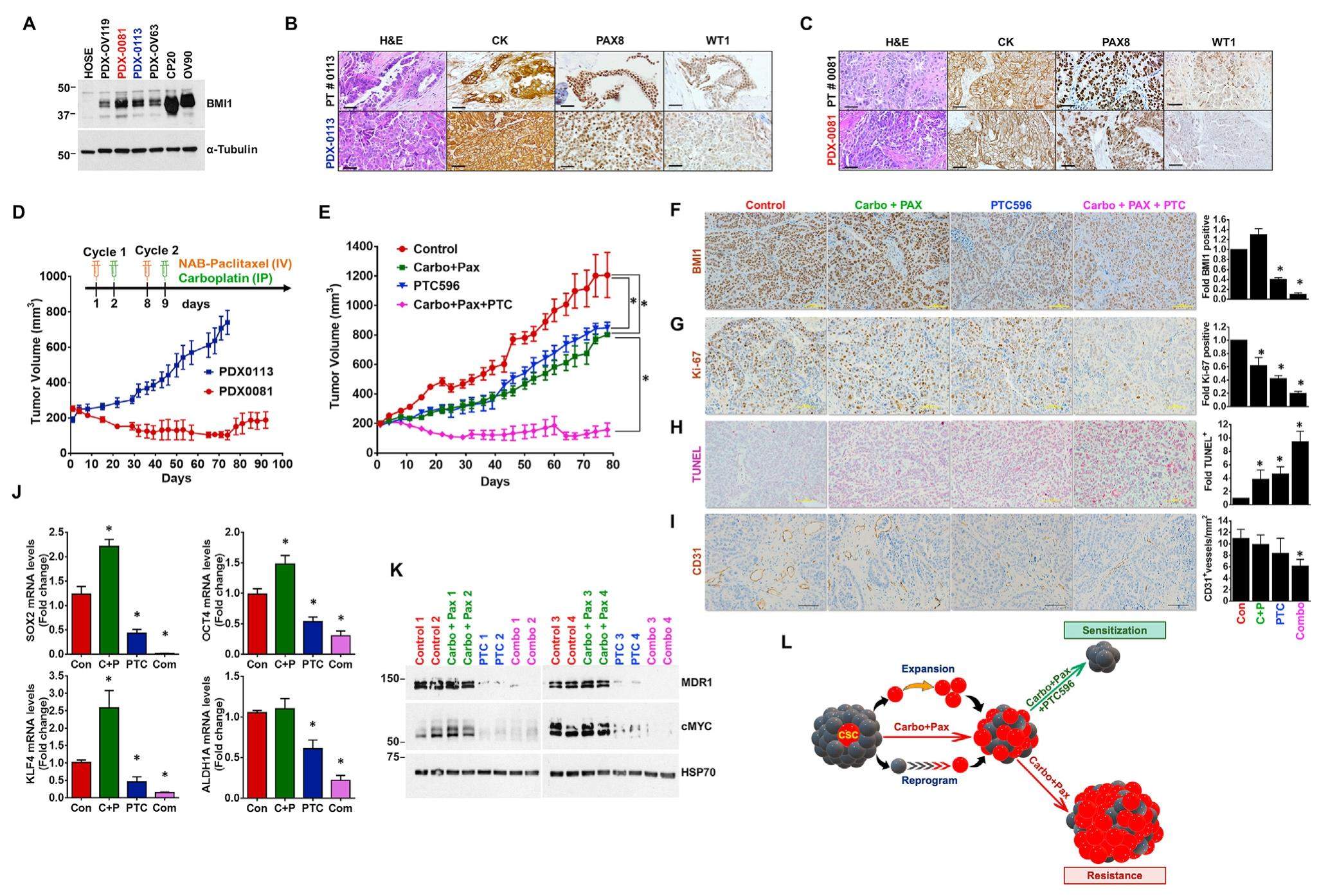
Targeting BMI1 mitigates chemoresistance in ovarian cancer


Resistance to chemotherapy is a prominent clinical problem in high grade serous ovarian cancer (HGSOC). An inadequate understanding of adaptive signaling coupled with limited treatment options for a chemoresistant tumor are likely causes for poor outcomes. We previously reported that BMI1, a stem-cell factor is instrumental in regulating chemoresistance. However, to advance anti-BMI1 therapy from the bench to the bedside, efficacy needs to be tested in patient-derived chemoresistant HGSOC models, which is lacking. Here, we report generation and characterization of a chemoresistant, patient-derived xenograft (PDX) model of HGSOC that recapitulates carboplatin and paclitaxel resistance observed in the patient. We demonstrate that the combination of standard therapy (carboplatin and paclitaxel) along with PTC596 also known as Unesbulin, a clinical inhibitor of BMI1 mitigates chemoresistance and significantly decreases the tumor growth compared to either therapy alone. Mechanistically, PTC596 treatment decreases expression of cancer stem-like markers in tumor tissues, along with a decrease in proliferative and an increase in apoptotic markers, thereby overcoming chemoresistance. Thus, patients with chemoresistant cancer that have limited treatment options may benefit from combination of anti-BMI1 strategies with standard chemotherapy.
